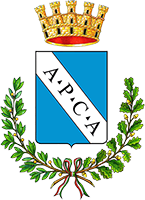ST. MAGNUS

ST. MAGNUS
The monastery of St. Magnus (or San Manno, martyr who lived in the 3rd century A.D. remembered for the intense pastoral work and the work of evangelization carried out between Puglia, his native region, Campania and Lazio) was mentioned for the first time in 1179 when the Bishop of Amelia, Pietro, assigned it to the management of the prior of St. James in Redere Hospital, situated on the layout of the old Via Amerina, not far away from the village of Sambucetole (cross reference to panel nr. 23).
Between 1188 and 1189 it occurred the episcopal donation through which the diocese of Amelia ceded the Hospital and St. Magnus’ s church assets to the Benedictine friars of the Abbey of St. Peter Outside the Walls in Rome, obtaining in return to keep the assistance towards the patients, ills and pilgrims who needed a refuge. At the end of the 13th century, the Benedictine nuns were introduced to St. Magnus; in 1399, at the behest of Pope Boniface IX, the feminine cloistered monastery of St. Magnus merged with the one of St. Mary in Canale, and in 1476 the Bishop Filippo Ventorelli arranged for almost all of the nuns to be concentrated in St. Magnus: the cloistered complex is now still run by Benedictine nuns.
A fine doorway leads into the narrow cloister courtyard, while the church entrance is on the right. The building is without a facade, and it went through several alterations that changed its original Medieval architectural lines. Inside, some fine Baroque stuccoes cover the wall structures. Even the altarpieces are entirely from the last restoration, that took place in 1624: Assumption of the Virgin (1627) by Andrea Polinori (Todi 1586-1648); Death of St. Benedict by Antonio Viviani, known as the Deaf (Urbino 1560 – 1620), that is a copy of a sixteen century painting by Giovanni de Vecchi (about 1536-Rome 1614) for the Basilica of St. Paul Outside the Walls, that was destroyed by a fire; Other two panels, to the sides of the high altar, representing St. Magnus reviving a dead baby and The Martyrdom of St. Magnus, uncertainly attributed to Bartolomeo Barbiani, a painter who was active for a long time in this territory (cross reference to panel nr. 14, “Church of St. Monica”).
The organ situated on the left wall of the church is worth mentioning: the instrument dates from 1680 and it sits inside a fine wooden case decorated with musician angels. Its peculiarity lies in its second keyboard, a pedal mechanism and all respective stops placed on the ground floor, inside the church: this arrangement allowed the organist to play the instrument, without entering the monastery, where seclusion was in force.


